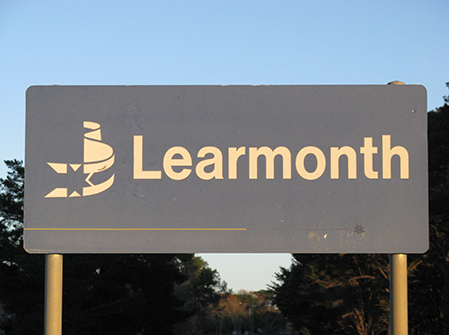 |
Written by A. S. Kenyon. "Back To Learmonth" Centenery Celebrations. 1937. |
|
LEARMONTH can pride itself on its godfather, Thomas Livingston Learmonth, who achieved a reputation second to none as a sheepbreeder; and by sheep is meant the animal that produces wool and not the nondescript breed seen so much of late, whose sole excuse is to be brought to the table to be eaten. Major Mitchell, however, was the first white man to see this delectable country; but long ages before, the Burrumbeet Nation which embraces many tribes - the Corringum-bullucs, the Cone-neen, the Galgal, the Pellerwin, the Berejin and the Carninje-cullucs - had lived there. The last named had their headquarters at Brown's Hill, and their tribal territory included Lake Learmonth. The sacred place where the totem ceremonies were celebrated, and the food producing ritual gone through, was Lar-ne-gerin (Langhi-Gherin). The Major, who had completed his Australia Felix expedidition by finding the Hentys at Portland Bay and by learning from the blacks along his homeward track about white men and their strange animals, was hastening home, short of provisions - the small quanity of flour obtained at the Henty's was of execrable quality - and fully aware that he had exceeded his instructions and far outstayed the time allowed for his Darling River exploration. On the 23rd September, 1836, the Major notes in his journal: "We had at length arrived under the Mammala (so called by the blacks) the bluff hill which had been my landmark since I had left Mt. Stapylton at Lake Respose near Dunkeld, and which I lost no time ascending. My first view over this eastern country was extensive. I found the prospect extremely promising, the land there appearing variegated with open plains and strips of forest, and studded with smooth green hills of the most beautiful forms. In the extreme distance a range much resembling that on which I stood, declined at its southern extremity (Mt. Misery) as this did - I named that Mt. Cole. To the southward the sea-haze dimmed the horizon, but I perceived the eastern margin of a large piece of water bearing south south east, and which I supposed might be Cadong." Cadong is the native name for the ocean; it really was Lake Goldsmith. |
|
Learmonth - A Brief Sketch
- Hits: 69

